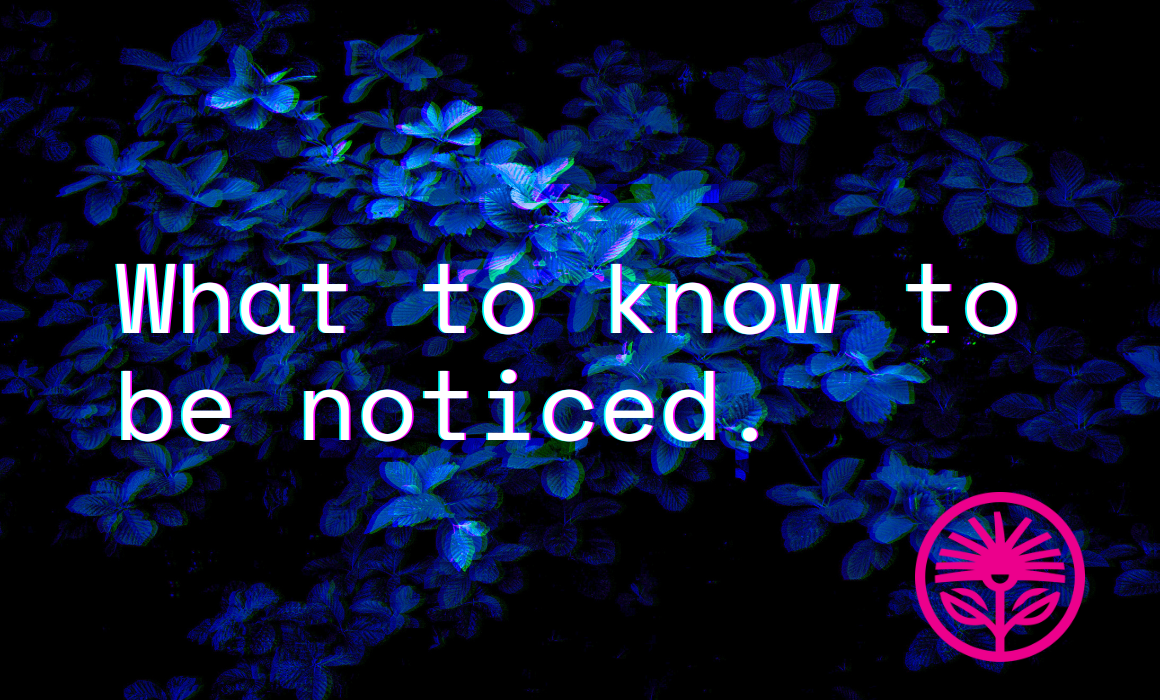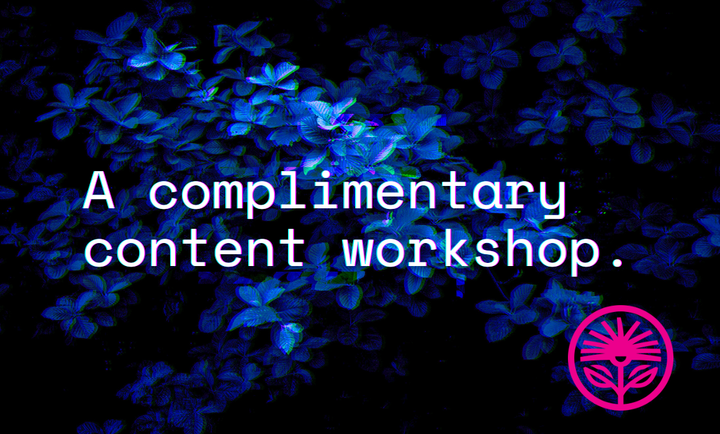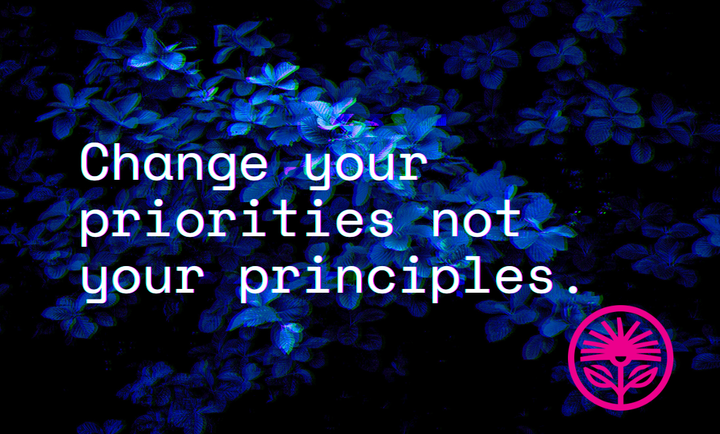What to know to be noticed — Kelford Labs Weekly
The Four Characteristics of a Customer


What should you say to get people to buy?
That’s the big question, isn’t it? All the strategy, planning, research, and consulting that the marketing industry does boils down to attempting to answer that question.
And, let’s face it, it’s the question behind the questions that most of our clients come to us with.
It’s the question we all wrestle with, every time we do any sort of marketing.
But most models of how marketing works are self-centered—they’re about what we want to say and who we want to buy from us.
Marketing funnels and customer journeys are ego-centric—they’re about the customer’s place in our timeline, not about where they are in their lives. Which leads to saying what we want to say instead of what they need to hear.
But over many years of designing marketing messages I’ve found that there’s another way to look at the customer.
There’s another way to conceptualize the dynamic system that is the market we operate in:
By seeing our customers as independent agents on their way to the default purchase in our market. The big, swirling black hole at the center of your competitive set, where everyone ends up if they aren’t intercepted along the way.
Through their journey they are influenced—like gravity—by blogs, review websites, peer recommendations, ads, and social media, changing their path through the marketplace.
It’s our job to engage prospects on their way to the default purchase by placing marketing messages in their path, which speak to them and address their needs, preferences, and urgency.
But if we’re to find a concentration of these customers that we can demonstrate our value to, we need to know a few things about them.
To address them, we need to locate them.
And to interest them, we need to understand them.
The Four Characteristics
To create a marketing message that can work and is likely to—because it’s on the customer’s path through the market and is targeted specifically for them—you need to know four things:
1) You need to know who they are—their intrinsic properties and how they behave in your particular market. This isn’t a fantasy or fiction, these are facts, as best as you can find them, about the people most likely to buy from you.
2) You need to know where they are—the place in the market where they began their journey and their position as it relates to you. Not where you want to advertise, or where all your competitors are, but where your ideal customers actually are in the market.
3) You need to know when they are—the timing and seasonality of their need and when you’re best able to help them. Nobody needs everything at all times. All purchases are bound to the time in which they take place, so we need to know when our ideal customers are most likely to need us.
4) You need to know why they are—what brought them into this market and how much urgency are they experiencing? If they’re in a rush, are we truly the best option? If they’re taking their time, do we want to spend resources addressing them?
Now, let’s look at these one at a time:
Who They Are
Before we can design a marketing message to inform or attract a particular customer, we need to know who they are. What are their preferences? What is their probable history with this market or industry? Have they been burned by a bad experience, or do they have consistent buying habits they adhere to?
When you’re imagining particles in a system, this is like their mass or charge—these properties influence their behavior in the market and how they’ll interact with our messages.
Customer personas amalgamate and desaturate the individual quirks and preferences of our actual best customers. They are a fantasy ideal, not a realistic one—and fictional characters are incapable of buying anything.
Where They Are
People don’t all enter markets in the same place. For instance, someone who needs to buy a tire might be replacing their winters on a set schedule or they might be urgently replacing one that just got damaged. They’re both “in the market for tires” but they might be in vastly different places within that market.
And someone who needs a lawyer or an accountant might need one someday, or yesterday.
If acknowledging who our customers are requires us to be honest about the reality of them, understanding where our best customers are requires us to be honest about ourselves. This isn’t about where we want to advertise or the customers we fantasize about attracting, it’s about the customers we can help the most right now—and that’s how we grow into the customers we want later on.
So, where customers “pop in” to the market greatly affects our ability to appeal to them and the path they begin following—and it has to be addressed.
When They Are
Preferences and needs change over time because circumstances change over time. Positions in the market change, competitors advance and retreat, technology disrupts the status quo, supply and shortages impact everything down the line.
And the customer’s various needs change depending on the hour, the day, and the season.
We want to believe that we’re always the best choice. But that belief blinds us to seeing the individual needs of our truly best customers. Which is one short step away from ignoring them completely.
Our marketing messages will have a vastly different effect on our ideal customers depending on when they see it.
So we need to know when our ideal customers need us most to be effective and efficient with our resources.
Why They Are
What forces are acting upon your ideal customer? This affects their trajectory—their most probable default purchase if they don’t work with you. Is their need very urgent? Then they might be making a compromise that takes them closer to the enormous market leader at the center of your market’s system.
Are they highly influenced by review websites? Then they might be heading toward a particular competitor with a niche following.
Our process is our position in the market—so we need to know the customers for whom we’re truly the best option, based on their urgency and influences, and on our priorities and values.
We don’t want to do them (and us) the disservice of standing in their way between them and their actual ideal provider. Or having them in the way of our ideal customers getting to us.
By knowing why our ideal customers are in the market and what influences them the most, we can place our messages in the path of their purchase intent.
Otherwise, we’re just advertising to empty space.
The Market is a System
These concepts are all interdependent—initial velocity entering the market affects the customer’s position at a particular moment in time. Urgency implies seasonality and personal preferences influence everything else.
And it’s important to remember that this system is dynamic—ever-changing and impossible to perfectly predict.
That’s why observation is key.
Customer selection is customer discovery, a process of identifying the customers for whom we are the best fit, and situating ourselves and our messages on their path through the market.
Which means context is crucial, like the greater context of the market, the industry, and the economy. These affect all of the influences and forces acting upon our customers, and they change the qualities and intensity of those forces.
So our goal is one of exploration, finding concentrations of customers entering in the same place in the market, with similar velocities and probable destinations.
And then we design and place our marketing messages along their path to purchase.
Where to Start
To get started identifying the four characteristics of your ideal clients, here are a few questions you can ask:
Who: Do I know what typically happens in my customers’ or prospects’ lives right before they realized they needed my type of support? In Bob Moesta’s terms, do I know their “Struggling Moment” that created demand for my product or service?
Where: Do I know the other businesses my customers are considering when they start considering mine? Am I imagining the comparison set I’d like to be in, or do I know the actual set my customers have put me in?
When: Does my business have a seasonality I can lean into? Am I trying to level out my revenue by artificially dampening my busy season and aggressively propping up my slow season? Can I find out more about the concentration of customers I experience during the busy times and seek to understand what drives their urgency?
Why: What preferences, tastes, and values do my very best customers seem to share? Am I asking my clients about where they go for information about my market or my competitive set, and could I learn more about their motivations, influences, and priorities?
The Big Picture
If this post is about grounding ourselves in what’s true about our ideal customers so that we can create and place marketing messages that work, next week’s post is about gravity.
It’s about getting beyond sales funnels, customer personas, and other 2-dimensional tools, and looking at the big picture.
We’re going to develop this model of the marketing universe so we can make marketing messages in the right place, at the right time, with the right words.
But it starts with knowing the characteristics of our customers.
So we can design and place messages that matter to them and demonstrate our unique value at a distance.
Kelford Inc. helps hands-on entrepreneurs and founders with complex marketing challenges define and articulate their unique value to their very best customers.
We’ll show you the way to always knowing what to say.



